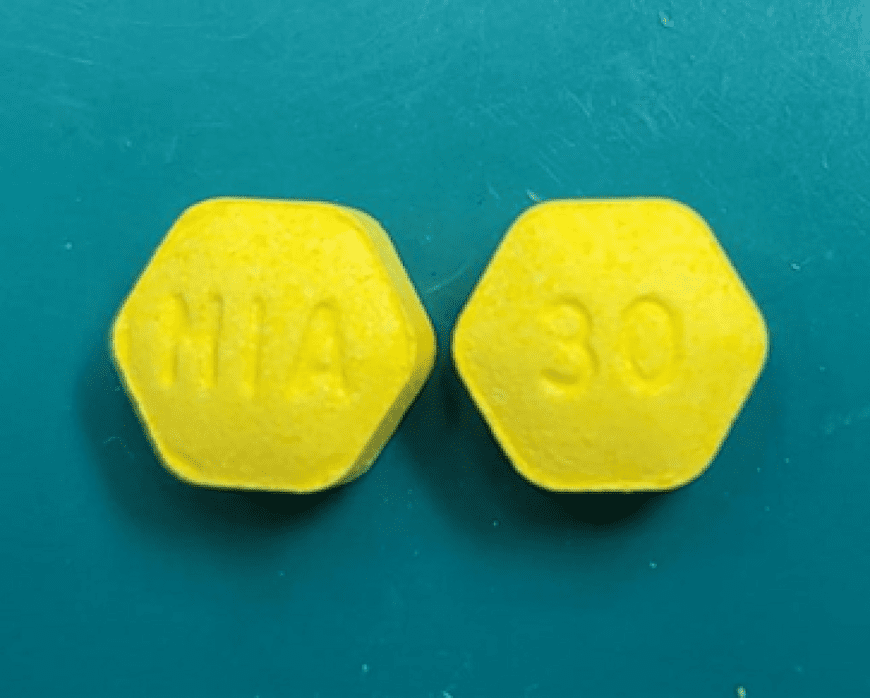Sometimes there’s a new truth to an old adage. In this case, “when it rains it pours.” At a time when children (and their parents) struggle with a nationwide ADHD drug shortage, the U.S. Food and Drug Administration (FDA) has announced that Azurity Pharmaceuticals Inc. issued a voluntary recall of a lot of Zenzedi CII 30 mg pills.
A Nebraska pharmacist opened a bottle of the medication, typically used to treat ADHD and narcolepsy, and found pills that contained carbinoxamine maleate, an antihistamine.
“Patients who take carbinoxamine instead of Zenzedi will experience undertreatment of their symptoms, which may result in functional impairment and an increased risk of accidents or injury, Azurity explained in a press release announcing the recall. “Patients who unknowingly consume carbinoxamine could experience adverse events which include, but are not limited to, drowsiness, sleepiness, central nervous system (CNS) depression, increased eye pressure, enlarged prostate urinary obstruction, and thyroid disorder.”
The pharmaceutical company added that it hadn’t received any reports of serious adverse events from patients taking the recalled pills.

“Zenzedi 30 mg tablets can be identified by light yellow hexagonal tablet debossed with ‘30’ on one side and ‘MIA’ on the other side and distributed in a white bottle with black writing and ‘30 mg’ highlighted yellow,” the FDA announcement reads. “Whereas the description of the suspect tablets (Carbinoxamine Maleate Tablets USP, 4 mg), which was provided by the reporting pharmacist, was white round tablets with imprints of ‘GL’ on one side and ‘211’ on the other side.”
Couldn’t Come at a Worse Time
The Zenzedi recall, while limited in scope, is just the latest in a series of setbacks for ADHD patients. It’s been more than a year since the FDA announced a nationwide shortage of ADHD medication, primarily Adderall, and there appears to be no end in sight. The dearth of ADHD drugs has even started to spread overseas, hitting both Australia and the United Kingdom.
Industry analysts blame the shortage on persistent supply constraints, manufacturing challenges, and an unprecedented demand spike during the pandemic. And drug manufacturers also point to federal regulations that restrict production that haven’t helped.
But the feds have pushed back.
“In 2022, manufacturers did not produce the full amount that these limits permitted them to take – resulting in a shortfall of 1 billion doses that could have been produced but were not made or shipped – and the data for 2023 has shown a similar trend,” DEA officials wrote last year.
Pandemic Drove ADHD Prescriptions
New research sheds some light on just how much demand jumped for ADHD meds during the pandemic. Published in JAMA Psychiatry, the study reveals that prescriptions jumped for C-II stimulants (14%) and non-stimulant ADHD drugs (32%). Young adults (between 20 and 39 years) and women received the greatest increase in new prescriptions.
Among C-II stimulants, amphetamine-dextroamphetamine increased more than methylphenidate. Among non-stimulant ADHD medications, atomoxetine demand jumped but guanfacine extended-release prescriptions remained unchanged.
The study’s authors did not explain the demand surge, especially in light of the revelation that demand for other drugs, such as antidepressants and benzodiazepines, held steady.
Stephen Hinshaw, a professor of psychology at the University of California, Berkeley told the New York Times that “the ‘TikTok phenomenon’ and other social media platforms almost certainly led to some over-prescription of medications owing in part to ‘quick and dirty’ self-diagnoses through online questionnaires.” Hinshaw also suggested easier access to online stimulant prescriptions could have played a role.
Unfortunately, even if regulators and manufacturers work out their differences, it takes time to ramp up production. In the meantime, patients must keep searching for refills.




